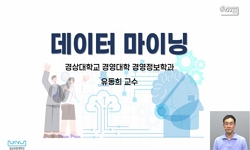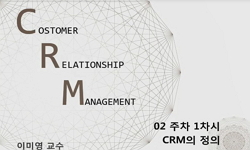This study was conducted in order to understand factors that would cause second convictions of the property crime and the violent crime committed by juvenile offenders. Even though there have been active researches on what would lead adolescents to co...
http://chineseinput.net/에서 pinyin(병음)방식으로 중국어를 변환할 수 있습니다.
변환된 중국어를 복사하여 사용하시면 됩니다.
- 中文 을 입력하시려면 zhongwen을 입력하시고 space를누르시면됩니다.
- 北京 을 입력하시려면 beijing을 입력하시고 space를 누르시면 됩니다.

데이터 마이닝 기법을 활용한 청소년 재범 관련요인 연구 = Study on Factors that Cause Second Conviction of Juvenile Offenders Using the Data Mining Method -Focused on Property Crime and Violent Crime-
한글로보기https://www.riss.kr/link?id=A100485810
- 저자
- 발행기관
- 학술지명
- 권호사항
-
발행연도
2014
-
작성언어
-
- 주제어
-
KDC
330
-
등재정보
KCI등재
-
자료형태
학술저널
-
수록면
129-151(23쪽)
-
KCI 피인용횟수
7
- 제공처
-
0
상세조회 -
0
다운로드
부가정보
다국어 초록 (Multilingual Abstract)
This study was conducted in order to understand factors that would cause second convictions of the property crime and the violent crime committed by juvenile offenders. Even though there have been active researches on what would lead adolescents to commit crimes, because of some legal issues, only a very few number of researches have been carried out in terms of what would cause a second conviction of a juvenile crime. However, in the light of how these second convictions by the juvenile offenders could be developed into other convictions when those offenders are all grown up, it is, now, considered to be necessary to conduct more researches on such matter and to come up with a system to work on the second conviction of the juvenile crimes. As adopting the data mining method, the study conducted a decision tree analysis to look into all those various school, family, peer, psychological and social factors in relation to the second convictions of the property crime and the violent crime, which are considered to cover the greatest percentage of the second conviction of the juvenile offenders. According to the findings of the analysis, in terms of the factors that would cause the second convictions of both the juvenile property crime and violent crime, 'If this adolescent associates with a delinquent peer' and 'If this adolescent goes to school' appeared to be related to the second convictions of those crimes. In other words, the group of the adolescents who hang around with delinquent peers and who do not go to school as well was understood to be more likely to commit the second convictions of the crimes than the other group that does not meet the requirements is. That led the study to argue for how important it is for any relevant fields to intervene the adolescents' relationships with the delinquent peers and to encourage the adolescents to keep going to school without giving up their studies. Other than what has been mentioned on the above, these 'determination for the desistance from delinquency' and 'If this adolescent has left school without permission' turned out to be other factors to be related to the second conviction of the property crime. As for the other factor in connection with the violent crime, the study confirmed that the 'family's actual ability to protect' would cause the second conviction of the juvenile violent crime. As those previous researches which have proved that there is a variety of factors to cause the juvenile crimes argued, this study also pointed out that in order to prevent the second convictions committed by the adolescents, local communities, schools and homes should work together and that this matter will be improved if more people gets interested in the problem with greater attention.
국문 초록 (Abstract)
본 연구는 청소년의 재산범죄와 폭력범죄의 재범과 관련된 요인을 파악해보고자 실시되었다. 청소년의 범죄원인에 대한 연구는 활발히 진행되고 있는 반면, 법률적인 문제로 재범에 관한 ...
본 연구는 청소년의 재산범죄와 폭력범죄의 재범과 관련된 요인을 파악해보고자 실시되었다. 청소년의 범죄원인에 대한 연구는 활발히 진행되고 있는 반면, 법률적인 문제로 재범에 관한 연구는 극히 제한되어 있는 상태이다. 하지만 청소년의 재범은 성인기의 재범으로 이어질 수 있다는 점에서 많은 연구와 이를 보완할 제도가 필요하다. 그리하여 본 연구는 데이터 마이닝 기법을 활용한 의사결정나무 분석을 통해 청소년의 재범 중 가장 많은 부분을 차지하고 있는 재산범죄와 폭력범죄의 재범과 관련된 다양한 학교ㆍ가족ㆍ친구ㆍ심리ㆍ사회적 요인들을 분석하고자 하였다. 분석결과, 청소년의 재산범죄 및 폭력범죄의 재범과 공통적으로 관련된 요인은 '비행친구의 유무'와 '학교 재학여부' 인 것으로 나타났다. 즉, 비행친구가 있으면서, 학교를 다니지 않는 집단이 그렇지 않은 집단에 비해 재범 비율이 더 높은 것으로 나타나 비행친구와의 관계조정과 학업 중단 없이 지속적인 학교생활의 중요성에 대해 언급하였다. 이외에 재산범죄의 재범과 관련된 다른 변수는 '탈비행 의지'와 '무단결석 유무'로 나타났고, 폭력범죄의 재범과 관련된 변수는 '가족의 실질적 보호능력'으로 나타났다. 청소년의 범죄에 미치는 요인들이 다양하다는 것을 입증한 기존의 연구들과 마찬가지로 본 연구에서도 청소년의 재범을 예방하기 위해서는 지역사회-학교-가정 모두의 노력이 필요하며, 많은 사람들의 관심과 노력이 필요함을 지적하였다.
목차 (Table of Contents)
- 국문요약
- Ⅰ. 서론
- Ⅱ. 선행연구 검토
- Ⅲ. 연구방법
- Ⅳ. 연구결과
- 국문요약
- Ⅰ. 서론
- Ⅱ. 선행연구 검토
- Ⅲ. 연구방법
- Ⅳ. 연구결과
- Ⅴ. 논의 및 결론
- 참고문헌
- Abstract
참고문헌 (Reference)
1 홍봉선, "환경요인과 청소년범죄의 관계에서 누적위험행동의 매개효과" 한국청소년복지학회 11 (11): 45-67, 2009
2 최옥채, "청소년의 재비행 과정에 관한 질적 연구" 한국교정학회 33 : 143-167, 2006
3 이성대, "청소년의 자기통제력이 비행에 미치는 영향에 관한 종단연구" 한국청소년복지학회 15 (15): 267-293, 2013
4 전종국, "청소년의 위험행동과 위험요인간의 관계에서 보호요인의 매개효과" 한국소년정책학회 17 : 185-212, 2011
5 박진희, "청소년의 비행지속에 영향을 미치는 요인과 성차" 한국청소년복지학회 14 (14): 75-96, 2012
6 조춘범, "청소년의 가정폭력경험 및 부모-자녀상호작용이 폭력비행에 미치는 영향 -인터넷 게임중독의 매개효과 검증-" 한국청소년복지학회 12 (12): 93-121, 2010
7 고장선, "청소년비행에 영향을 미치는 자기낙인과 사회적 지지체계 연구" 한국청소년복지학회 11 (11): 173-194, 2009
8 김웅수, "청소년범죄자의 피해자인지에 관한 연구: 소년보호기관 위탁청소년을 중심으로" 한국청소년복지학회 14 (14): 139-161, 2012
9 이재경, "청소년기 부모애착, 또래애착, 교사애착이 비행에 미치는 종단적 영향력" 한국청소년복지학회 14 (14): 51-73, 2012
10 전선영, "청소년 탈비행의 유형 및 예측변인에 관한 연구" 한국청소년복지학회 15 (15): 395-415, 2013
1 홍봉선, "환경요인과 청소년범죄의 관계에서 누적위험행동의 매개효과" 한국청소년복지학회 11 (11): 45-67, 2009
2 최옥채, "청소년의 재비행 과정에 관한 질적 연구" 한국교정학회 33 : 143-167, 2006
3 이성대, "청소년의 자기통제력이 비행에 미치는 영향에 관한 종단연구" 한국청소년복지학회 15 (15): 267-293, 2013
4 전종국, "청소년의 위험행동과 위험요인간의 관계에서 보호요인의 매개효과" 한국소년정책학회 17 : 185-212, 2011
5 박진희, "청소년의 비행지속에 영향을 미치는 요인과 성차" 한국청소년복지학회 14 (14): 75-96, 2012
6 조춘범, "청소년의 가정폭력경험 및 부모-자녀상호작용이 폭력비행에 미치는 영향 -인터넷 게임중독의 매개효과 검증-" 한국청소년복지학회 12 (12): 93-121, 2010
7 고장선, "청소년비행에 영향을 미치는 자기낙인과 사회적 지지체계 연구" 한국청소년복지학회 11 (11): 173-194, 2009
8 김웅수, "청소년범죄자의 피해자인지에 관한 연구: 소년보호기관 위탁청소년을 중심으로" 한국청소년복지학회 14 (14): 139-161, 2012
9 이재경, "청소년기 부모애착, 또래애착, 교사애착이 비행에 미치는 종단적 영향력" 한국청소년복지학회 14 (14): 51-73, 2012
10 전선영, "청소년 탈비행의 유형 및 예측변인에 관한 연구" 한국청소년복지학회 15 (15): 395-415, 2013
11 김경, "청소년 비행행동에 있어서 부모요인과 친구요인의 상호작용 효과에 관한 연구" 한국청소년복지학회 12 (12): 1-21, 2010
12 엄명용, "청소년 비행 유형별 비행 재발 예측 요인 탐색 : 생태·체계적 접근" 3 : 176-216, 2001
13 김성언, "청소년 범죄 추세(1998-2008)의 분석과 대응 방안의 탐색" 한국소년정책학회 13 : 1-50, 2009
14 김동일, "직업적 장애 선별과 고용 및 직업재활 서비스 지원 프로토콜 탐색" 한국특수아동학회 16 (16): 1-23, 2014
15 신소정, "지역사회 교정을 통한 비행 청소년 재범 방지에 관한 연구" 23 : 54-90, 2011
16 이창식, "중·고등학생 학교급에 따른 청소년 자살생각의 예측요인 : 의사결정나무분석의 적용" 한국청소년정책연구원 23 (23): 31-55, 2012
17 김성은, "의사결정나무 분석기법을 이용한 농촌거주 노인의 우울예측모형 구축" 한국간호과학회 43 (43): 442-451, 2013
18 이경은, "아동에 대한 신체학대 중단 예측요인에 관한 연구" 한국청소년복지학회 16 (16): 227-247, 2014
19 김재엽, "신체학대가 청소년의 비행에 미치는 영향 -부모애착과 우울의 매개효과-" 한국청소년복지학회 14 (14): 169-191, 2012
20 이발희, "소년원 퇴원생의 사회적응과정에 관한 질적 연구" 한국교정복지학회 (24) : 1-38, 2012
21 김웅수, "소년보호과정 청소년의 비행인식 결정요인에 관한 연구" 한국청소년복지학회 12 (12): 1-22, 2010
22 홍영오, "소년범의 검사 결정전 조사제도를 위한 위험성평가도구개발연구" 한국형사정책연구원 2009
23 정혜원, "사회적환경이 청소년비행에 미치는 영향-위험요인과 보호요인을 중심으로" 한국청소년복지학회 10 (10): 149-165, 2008
24 이정미, "비행청소년의 소년원 체험에 관한 질적 연구" 한국청소년복지학회 9 (9): 63-83, 2007
25 정기명, "비행청소년의 보호관찰경험에 관한 연구" 한국청소년복지학회 15 (15): 95-127, 2013
26 김성곤, "비행청소년의 가정·학교·사회 환경·개인심리적 변인과 재비행과의 관계" 8 : 165-217, 2005
27 손순용, "비행청소년과 교정복지 방안" 5 : 91-111, 2006
28 이해경, "비행 청소년들의 내재화/외현화 문제에 미치는 생활부적응문제들의 영향력과 성차" 한국청소년복지학회 15 (15): 295-319, 2013
29 김효수, "비공식낙인과 부모애착이 청소년의 비행에 미치는 인과모형 - 매개효과의 검증을 중심으로 -" 한국청소년복지학회 12 (12): 185-206, 2010
30 조경미, "보호관찰청소년의 일상생활 적응에 관한 질적 연구" 한국청소년복지학회 10 (10): 203-222, 2008
31 대검찰청, "범죄분석, 2010-2013년"
32 이경은, "기초생활보장 가정 아동의 인지발달 예측모형 -의사결정 나무분석의 적용-" 한국인간발달학회 17 (17): 227-242, 2010
동일학술지(권/호) 다른 논문
-
보호관찰청소년을 위한 대학생의 집단멘토링 경험에 관한 질적 연구
- 한국교정복지학회
- 고윤순(Yun Soon Koh)
- 2014
- KCI등재
-
- 한국교정복지학회
- 김경화(Kim Kyeong Hwa)
- 2014
- KCI등재
-
- 한국교정복지학회
- 강정희(Gang Jeong hee)
- 2014
- KCI등재
-
- 한국교정복지학회
- 김정훈(Kim Jung Hun)
- 2014
- KCI등재
분석정보
인용정보 인용지수 설명보기
학술지 이력
| 연월일 | 이력구분 | 이력상세 | 등재구분 |
|---|---|---|---|
| 2026 | 평가예정 | 재인증평가 신청대상 (재인증) | |
| 2020-01-01 | 평가 | 등재학술지 유지 (재인증) |  |
| 2017-01-01 | 평가 | 등재학술지 유지 (계속평가) |  |
| 2013-01-01 | 평가 | 등재학술지 선정 (등재후보2차) |  |
| 2012-01-01 | 평가 | 등재후보 1차 PASS (등재후보1차) |  |
| 2010-01-01 | 평가 | 등재후보학술지 선정 (신규평가) |  |
학술지 인용정보
| 기준연도 | WOS-KCI 통합IF(2년) | KCIF(2년) | KCIF(3년) |
|---|---|---|---|
| 2016 | 1.5 | 1.5 | 1.42 |
| KCIF(4년) | KCIF(5년) | 중심성지수(3년) | 즉시성지수 |
| 1.26 | 1.15 | 1.414 | 0.49 |




 스콜라
스콜라






